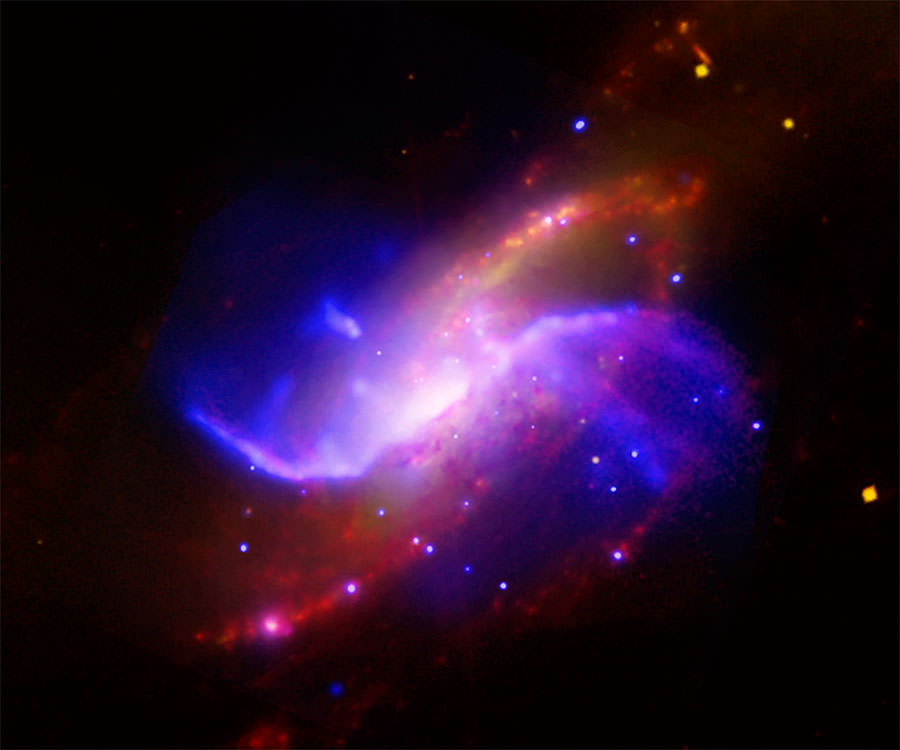Here’s this week’s Where In The Universe Challenge. You know what to do: take a look at this image and see if you can determine where in the universe this image is from; give yourself extra points if you can name the telescope or spacecraft responsible for the image. We’ll provide the image today, but won’t reveal the answer until tomorrow. This gives you a chance to mull over the image and provide your answer/guess in the comment section. Please, no links or extensive explanations of what you think this is — give everyone the chance to guess.
UPDATE: The answer has now been posted below.
This is galaxy M106 (a.k.a. NGC 4258) with its two mysterious and ghostly spiral arms. The image is a team effort: the Chandra X-ray Observatory, Spitzer Space Telescope, the European Space Agency’s XMM-Newton X-ray observatory, and older visible data from the Hubble Space Telescope.
M106 is about 23.5 million light-years away in the constellation Canes Venatici. The arms have been a mystery: in visible-light images, two prominent arms spiral outward from the bright nucleus and are dominated by young, bright stars, which light up the gas within the arms. But in radio and X-ray images, two additional spiral arms show up, appearing as ghostly apparitions between the main arms. These so-called “anomalous arms” consist mostly of gas. This composite image, and work done by an international team of astronomers, confirmed earlier suspicions that the ghostly arms represent regions of gas that are being violently heated by shock waves.
Read more about this image and the science behind it at the Chandra website.


NGC 4258 (M106). Composite images including X-ray from Chandra, optical from Palomar Observatory, Infra Red, and Radio from the Very Large Array.
looks like it might be M81 in inferred and x-ray
This looks like M 106. A multiwavelength image from XMM-Newton/Chandra, Spitzer, VLA & DSS (48″ Oschin).
kind of looks like M82 ;x
John is correct, this is the M106 Spiral Galaxy, courtesy of Spitzer.
A galaxy, (I don’t know which) in visible and X-Ray.
I assume the X-Ray portion of the image came from Chandra.
NUTS! I’m late again!
CHANDRA, taken by HUBBLE
Amazing! it just popped up in my email and there is already 8 replies. You guys are gOOOOOOd.
I was going to say NGC 660, but John is right, it’s a Chandra image of M106
Composite image of NGC 4258 (M 106) – X-Ray: Chandra, Optical: DSS, IR: Spitzer, Radio: VLA
NGC 4258
NGC 4258 = M106 a composition of optical (DSS), infrared (Hubble), X-Ray (Chandra) and radio (NRAO) Fine image.
NGC 4258 = M106. A composition in optical (DSS), infrared (Hubble), X-ray (Chandra) and radio (NRAO). Fine image.